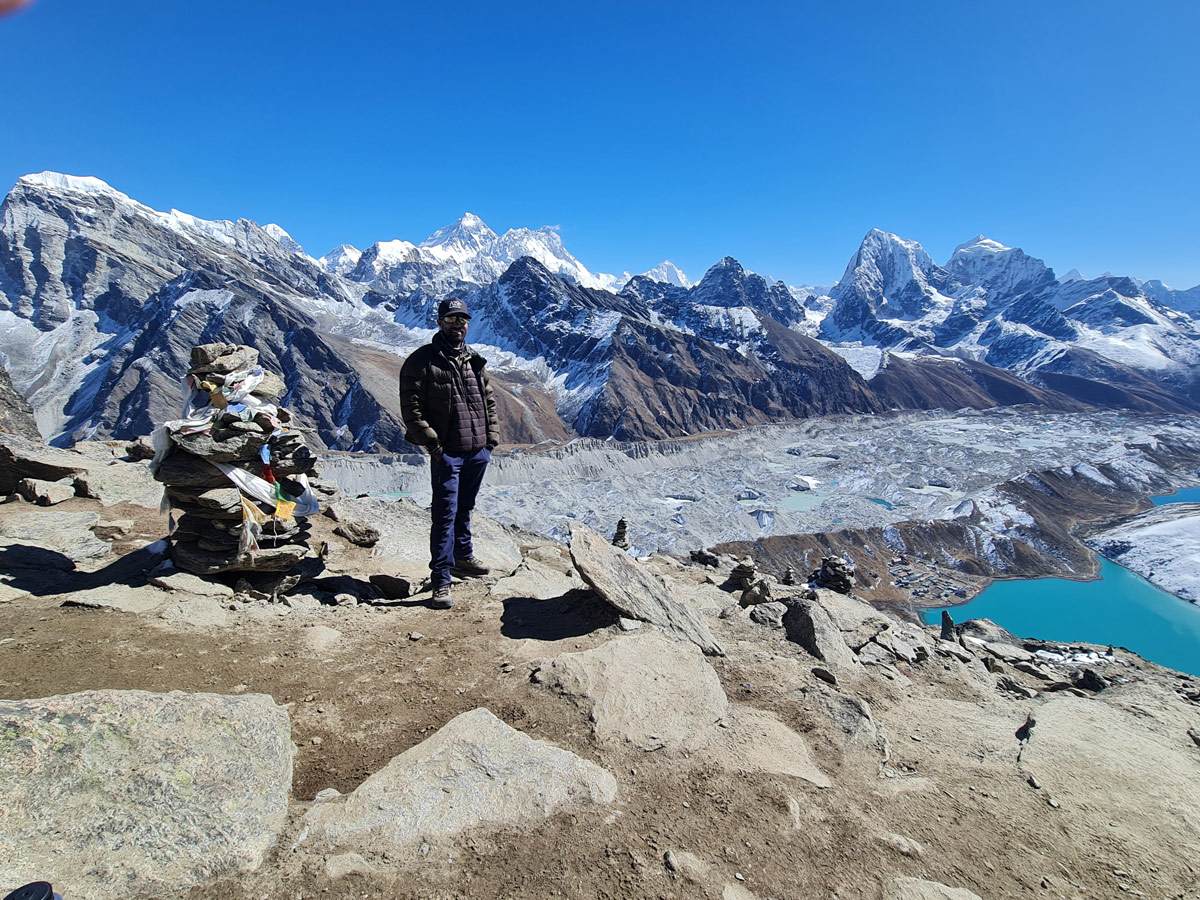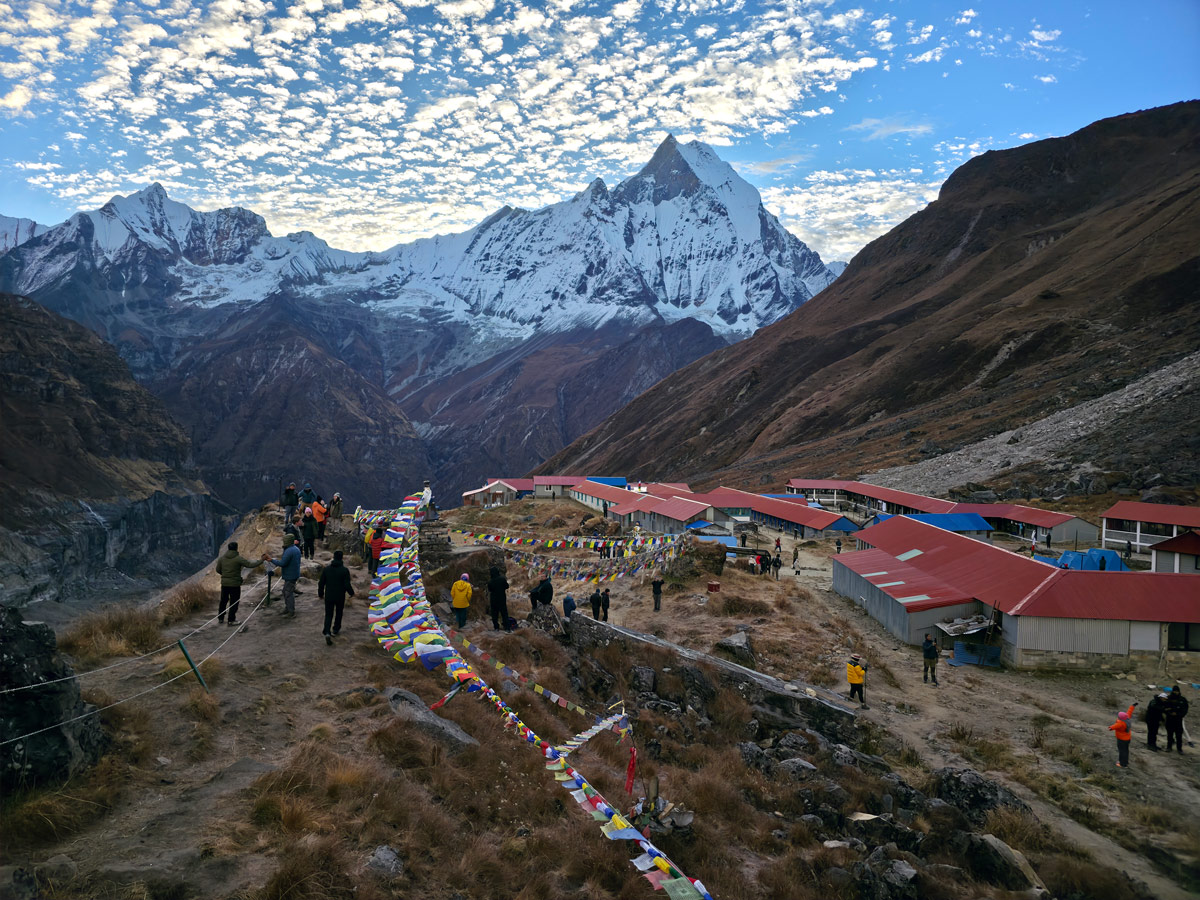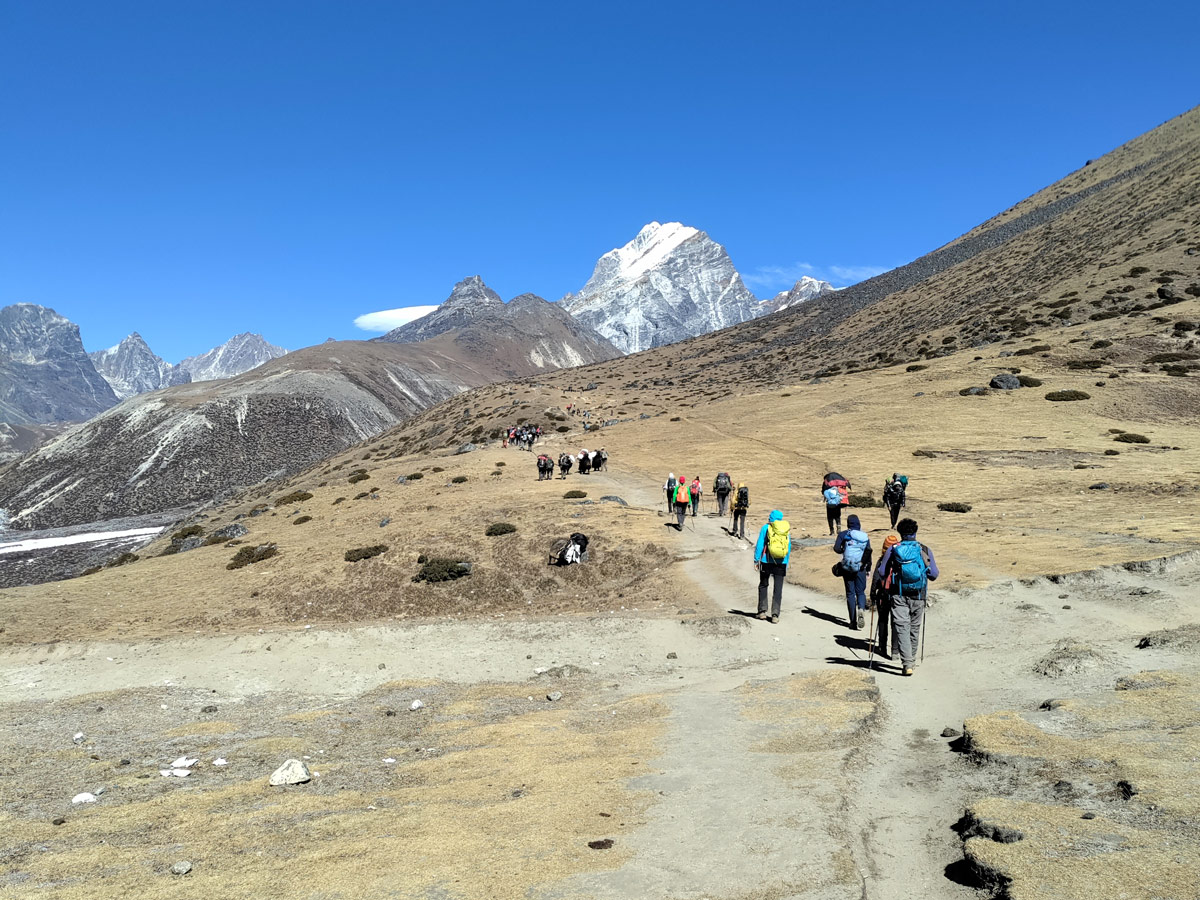Known as the holy grail of trekking across the world, the Everest region captivates trekkers with its majestic mountains, serene valleys, and traditional Sherpa villages. Its iconic trails and awe-inspiring scenery have made it a must-visit destination for anyone seeking the pinnacle of Himalayan adventure.
There are many treks in the Everest region, and each one of them has its own unique selling point. No trek in the Everest region leaves the trekkers disappointed.

The most popular example for this is the iconic Everest Base Camp trek which is the most popular trekking route in the world. It attracts trekkers from all corners of the world.
Another underrated example of the same is the serene Gokyo Lakes trek which allows you to explore a more remote side of the Everest region, i.e. the Gokyo Valley.
Now, wouldn’t the combination of both these treks be a perfect one? It indeed would. That is how the Gokyo to Everest Base Camp trekking route came into existence.
It allows you to experience both the remoteness and silence of Gokyo Valley along with the hustle and hype of the Everest Base Camp trek. Therefore, in this blog, we are covering why one must trek Gokyo to Everest Base Camp route.
Understanding the Gokyo to Everest Base Camp Route
First of all, let’s understand the Gokyo to Everest Base Camp trekking route in detail. You must have definitely heard about the classic Everest Base Camp trek route, right?
This route is a similar one, at least for the second half. For the first half, the trekking route takes a small detour towards the stunning Gokyo Valley instead of taking the regular Tengboche, Dingboche and Lobuche route.

The trail moves from Lukla to Namche Bazaar but then heads west to the Gokyo Lakes and Gokyo Ri before crossing the high Cho La Pass (5,420 m / 17,782 ft) to rejoin the main EBC trail.
Think of it as a grand loop that is a more challenging yet infinitely more fulfilling alternative for those who seek not just to see Everest, but to truly immerse themselves in its majestic surroundings.
The duration of Gokyo to EBC trek is around 15 to 18 days, all depending on your pace, itinerary, and how well your body adapts. The difficulty level is considered challenging as you also need to climb the Cho La Pass.
EBC Trek Vs Gokyo to EBC Trek: A Brief Comparison
Let’s get a brief understanding of what sets the EBC trek apart from the Gokyo Lakes trek, and what makes exploring Gokyo to Everest Base Camp a trek that is the best of both the worlds.
The classic EBC trek is a 14 day trek that takes you from Lukla to Everest Base Camp, often up to Kalapathhar, via Namche Bazaar, Tengboche, Dingboche, and you go back to Lukla via the same route.
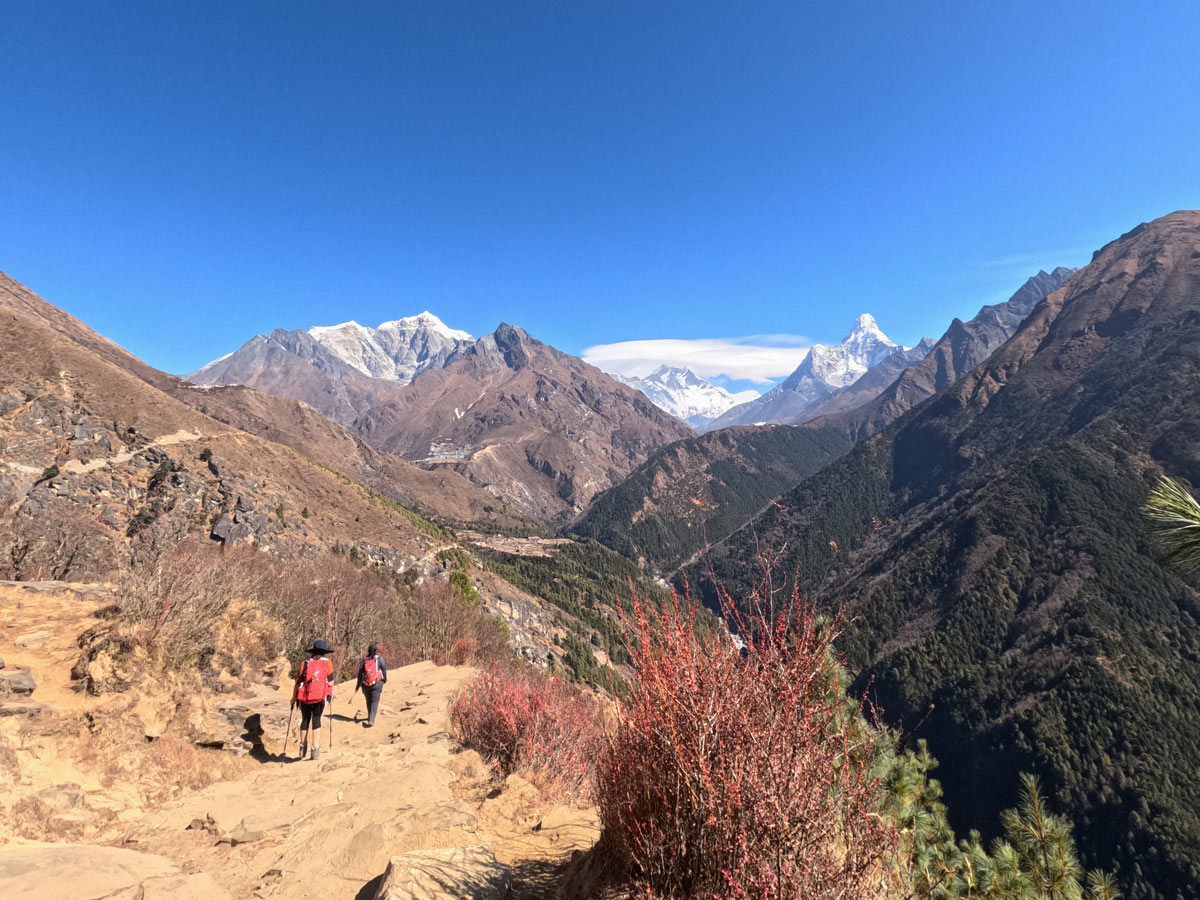

The route is quite efficient and iconic too. However, the crowds here and the familiarity that you experience while coming back through the same route can be a downside of this route.
This is where the Gokyo Lakes to EBC trek, also known as Everest Circuit Trek, brings in a valuable addition. Being a more expansive circuit, you will go through an entire loop as you reach the EBC by exploring Gokyo and come back through the classic EBC route, meaning different views each time.


This circular itinerary ensures that every day is a new visual feast, preventing monotony and maximizing your exposure to the diverse beauty of the Sagarmatha National Park.
Highlights of the Gokyo to Everest Base Camp Trek
The Gokyo to Everest Base Camp trek is more than just a different route, it is an entirely different experience filled with a series of unparalleled highlights. Let’s take a detailed look at some of them:
The Stunning Gokyo Lakes
The majestic Gokyo Lakes are definitely the major highlight of the Gokyo to EBC route. It is a group of six alpine lakes that are fed by the Ngozumpa Glacier and shimmering in the shades of turquoise and emerald.
These lakes are situated at an altitude of above 4,700 meters and come under some of the highest freshwater lakes in the world. The surrounding around the lake is very quiet and pristine with minimal crowd.



They also hold spiritual value in both Hinduism and Buddhism. Therefore, every year during Janai Purnima, pilgrims make the challenging journey to bathe in their icy waters.
The Gokyo Lakes are all situated at a certain distance from each other, and you can explore them in any order. You can also return midway and not explore all the lakes. Either way, these lakes are the first highlight of the trek.
Gokyo Ri
The Everest region has many vantage points that give stunning views. However, the views from Gokyo Ri are absolutely unbeatable as you get a view of a long stretch of Himalayas from this vantage point.
Situated at an altitude of 5,357 meters (17,575 ft), the view from here is further accompanied by the challenge and adrenaline rush of climbing a high altitude point which makes it a two in one adventure.
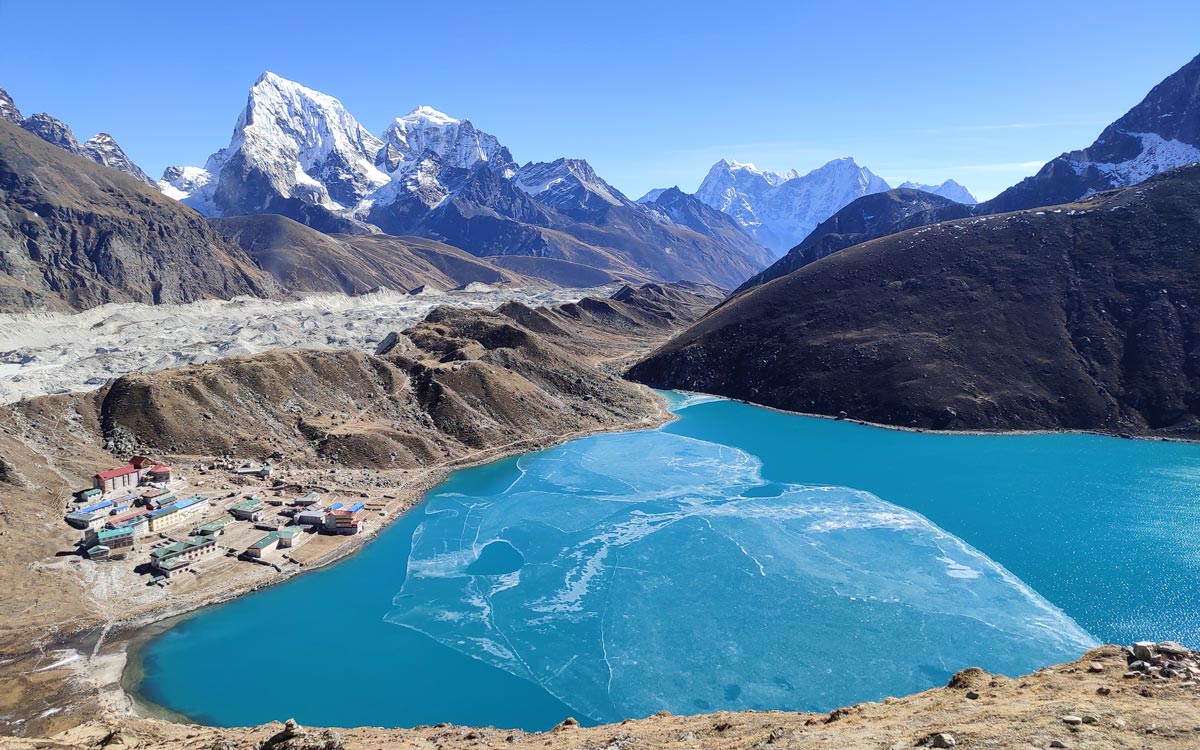

From here, you can see four of the world’s highest mountains including Mt. Everest, Lhotse, Makalu, and Cho Oyu, all in one sweeping panorama. While many people claim that the views here surpass those of Kala Patthar, the lack of crowds definitely ensures its superiority.
Cho La Pass Crossing
The Cho La Pass is one of the high mountains passes of Everest region situated at 5,420 meters. This is the pass that connects the Gokyo Valley with Everest region.
The climb to the Cho La Pass is unlike any other, it is a challenging, strenuous climb over rocky terrain and glacial moraine. The landscapes here are a test to your physical fitness.


The crossing usually involves walking on icy terrain and boulder fields, with even crampons sometimes required. However, the reward is definitely worth it as you get the panorama of towering peaks and glaciers you traverse, combined with the feeling of achievement.
Ngozumpa Glacier
Regarded as the largest ice mass of Nepal, the Ngozumpa Glacier is yet another highlight of the Gokyo to Everest Base Camp route. This glacier is the source of the Gokyo Lakes, and it is a spectacle in itself.
The icy crevasses of the glacier add another dimension to your overall Everest experience and the glacier also stretches as long as 36 km which makes it the longest glacier in the Himalayas.
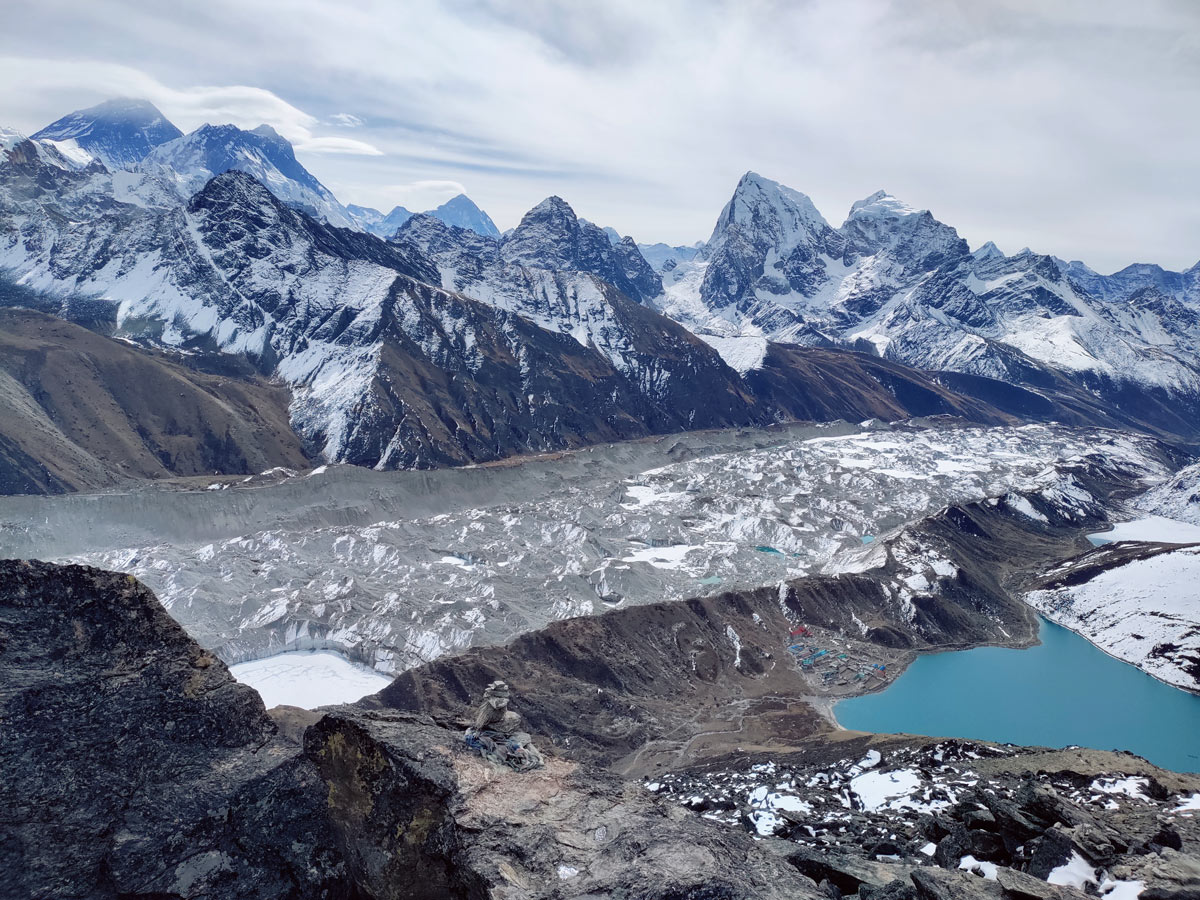

The immense scale of the glacier is a powerful reminder of the raw, untamed power of nature. Walking around its glacial moraine is a unique journey through a landscape that is constantly shaped by the movements of ice and rock.
Everest Base Camp
Of course, the ultimate goal of the Gokyo to Everest Base Camp trek also remains to reach at the base of the highest peak in the world, i.e. at the Everest Base Camp at 5,364 m (17,598 ft).
As you stand at the EBC after many days of long trekking hours, sore feet, blisters on the feet, scars of battling extreme temperatures, and a camera full of memory and space, the feeling is something out of the world.


Firstly, you will feel the adrenaline rush that is out of the world which is accompanied by the proud sense of achievement as you start piecing together your entire trek.
Now this moment is further enhanced by the majestic views that you get from here. An entire stretch of Himalayas await you here, which is further enhanced during the golden hours, i.e. during sunrise and sunset.


You will see Himalayas like Mount Everest itself, but trekkers also get spectacular views of Lhotse, Nuptse, Ama Dablam, Pumori, Makalu, and Thamserku, among others.
Kala Pathhar
Many trekkers extend their EBC journey up to Kala Pathhar as it is not everyday that you reach up to EBC. Kalapathhar is not much of a journey from Everest Base Camp and it just makes sense to experience this highest point of the trek too.
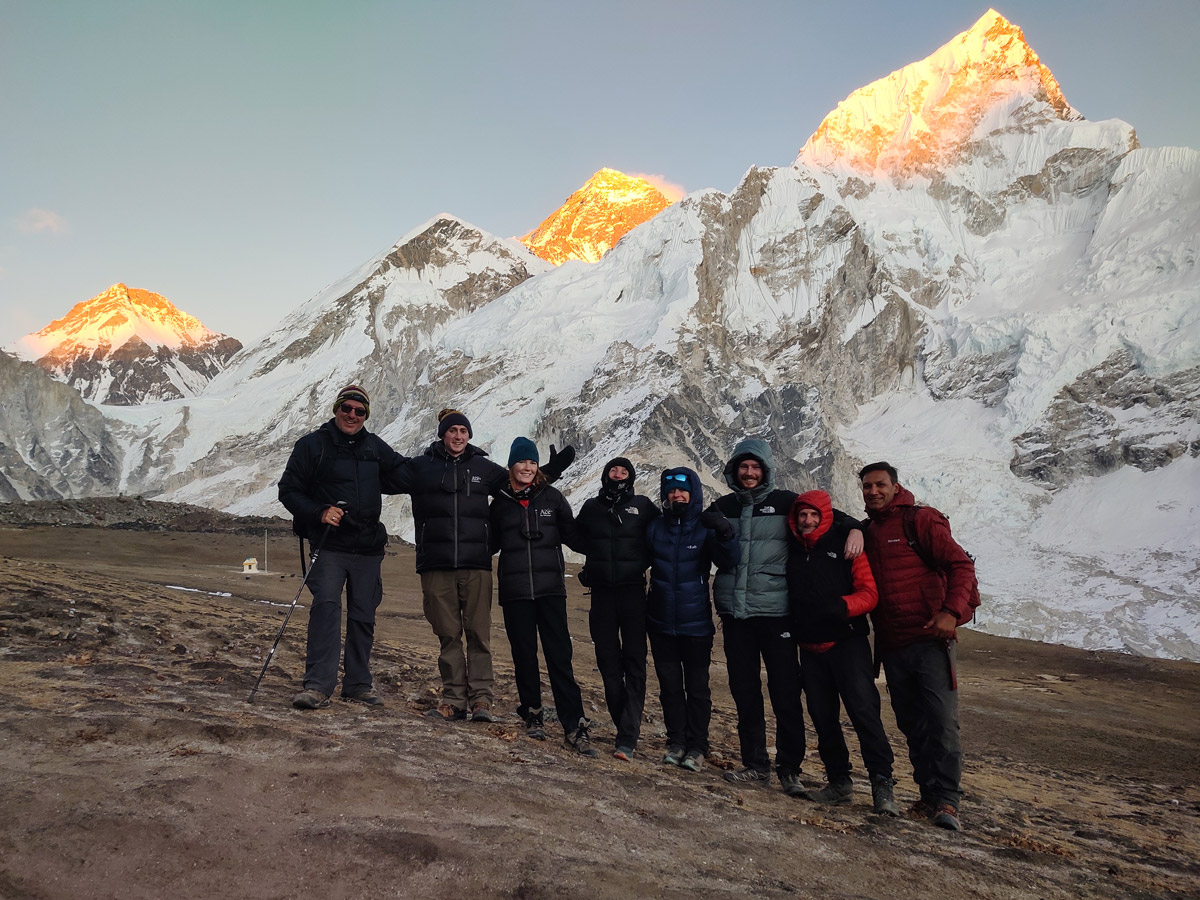

Standing at a mighty 5,555 meters, Kala Pathhar is a vantage point from where you get perfect views, even better than that from EBC as from here you will get a perspective of Everest that is up close but also at a slight distance that makes it clear.
Think of it as signing up for a front row seat to witnessing the sunrise above the majestic Mt. Everest. And the surrounding peaks like Ama Dablam, Lhotse, and Nuptse can also be observed from a different perspective.
Why Choose the Gokyo Route?
Below are a few main reasons why one must trek Gokyo to Everest Base Camp Route over the classic Everest Base Camp Trek route:
- Due to popularity of the Everest Base Camp trek, there is a big crowd at the trail. This makes your exposure to the trail pretty much limited as you have to share it with others. At the Gokyo to EBC route, the crowd is much less and you can enjoy more.
- Gokyo Ri is one of the best vantage points in the Everest region from where you can see more 8,000-meter peaks in a single frame and the view of Everest alongside Cho Oyu, Makalu, and Lhotse is unbeatable.
- Instead of just exploring the Khumbu Valley, you will experience lakes, glaciers, alpine valleys, high passes, and the Ngozumpa Glacier, the longest glacier in Nepal.
- The cultures in the classic EBC route are diluted due to the growing trekking industry here. Therefore, going through the Gokyo route allows you to have a cultural exposure on top of trail exploration.
Difficulty Level of the Trek
The Gokyo to Everest Base Camp route is considered moderate to challenging, slightly more on the challenging side given its extended duration and the challenge of conquering the Cho La Pass.
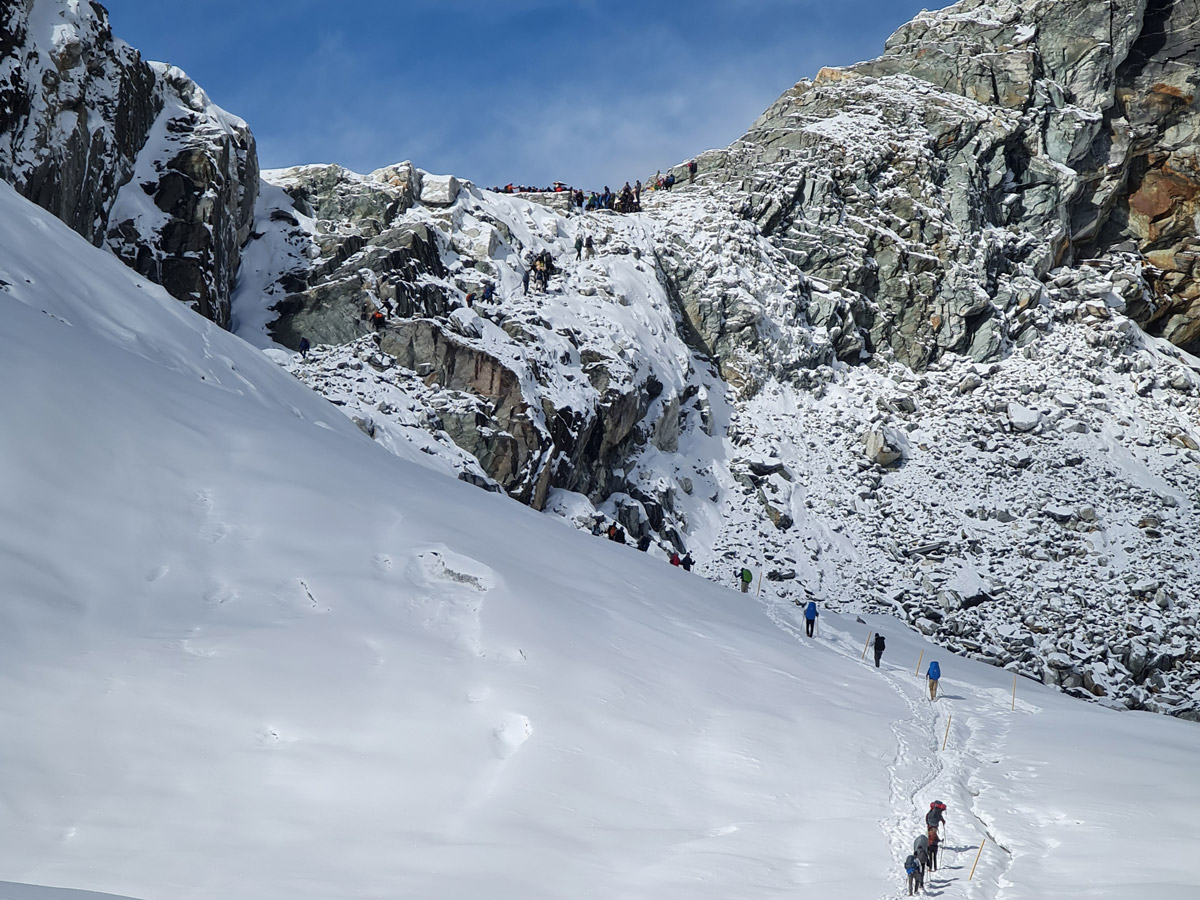

Trekkers with good physical fitness and proper preparation can conquer the trek quite easily. However, prior trekking experience is preferred so that you know what to expect during the trek. For beginners, more preparation and patience is required.
Documents Required
For trekking the Gokyo to Everest Base Camp trek route, you need the standard documentation that is required for the classic Everest Base Camp trek. It is as given below:
- Passport
- Valid Visa
- Immigration and Customs Clearance
- Passport Size Photo
- Trekker’s Information Management System (TIMS Permit; required for all the treks in Nepal to track the trekker’s for their safety)
- Sagarmatha National Park Entry Permit (Specific to Treks of Everest Region)
- Khumbu Pasang Lhamu Rural Municipality Permit (Specific to treks of Everest Region)
Accommodation and Meals
The teahouse trekking culture is quite well established in Nepal. Therefore, even in the Gokyo to Everest Base Camp route, you will find many basic and comfortable teahouses for your stay.
Towards the Gokyo valley side, you will find small teahouses with basic and minimal amenities like a shared room with a shared bathroom and communal dining space. You will be provided with comfortable bed and blanket for a good night’s sleep.
However, other amenities like hot showers, laundry, wifi and internet, electricity for charging, and an elaborate menu might not be readily available as it is a remote area.
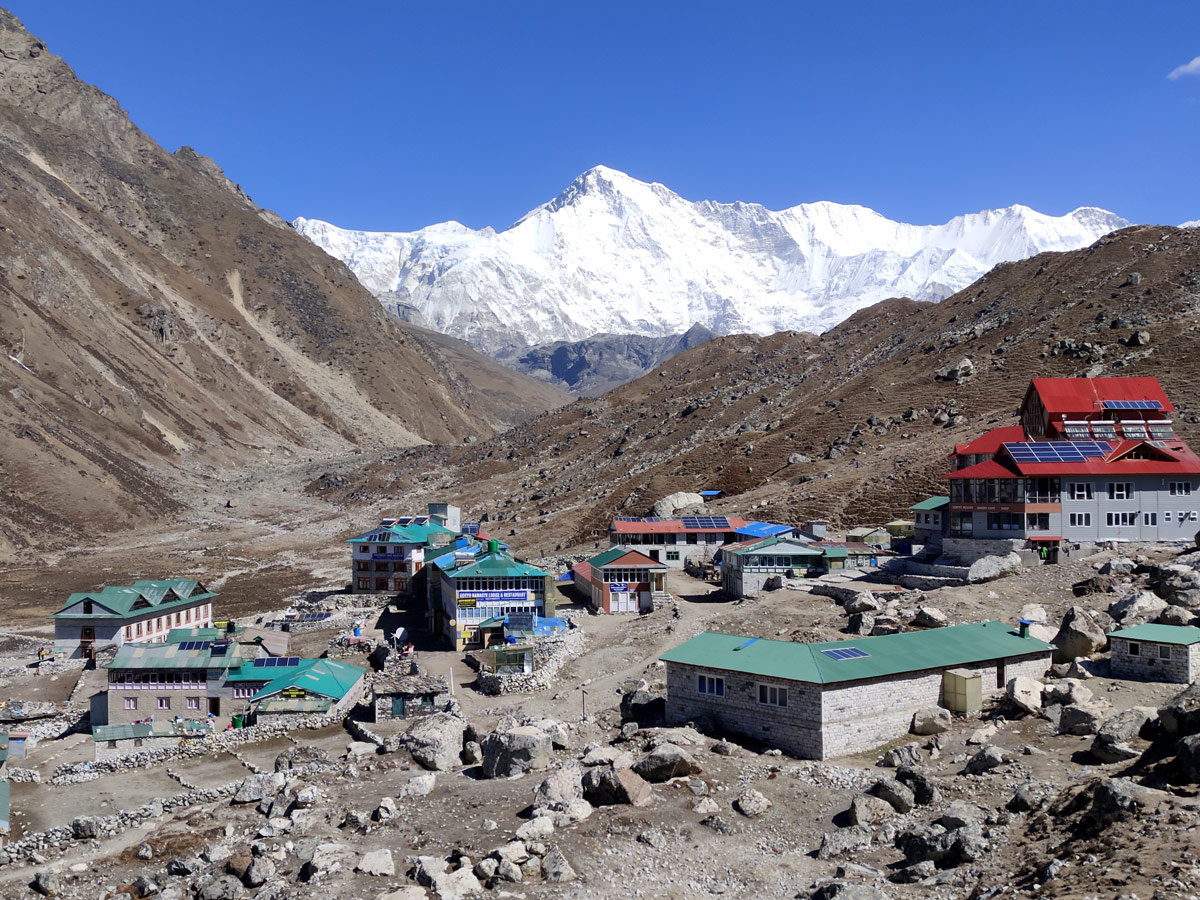

When you move towards the EBC trek route, you will see a drastic change in the quality of the teahouses and the amenities provided there. This is because the EBC trek is the major trekkers’ attraction.
You will be able to find private rooms with attached bathrooms and hot showers. The bed and blanket will be more comfortable. Even your menu will be more elaborate and extend beyond the typical Dal, Bhat, Tarkari.
Wifi and internet is available on the Everest Base Camp for extra charge, but the strength might not be great as it is still a remote location, and many trekkers would be connected to the same network.
Facilities like hot showers, laundry, and charging points are available in many lower sections of the trek for an additional charge of around 2 to 3 USD per service.
